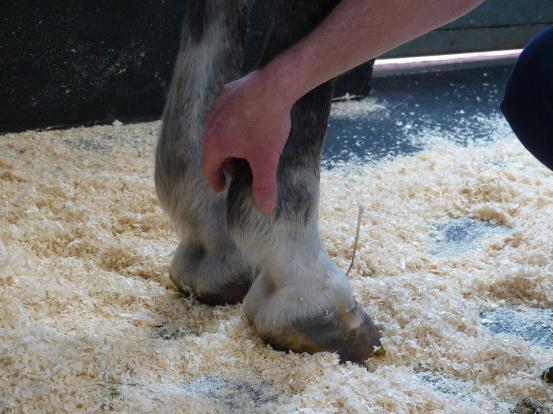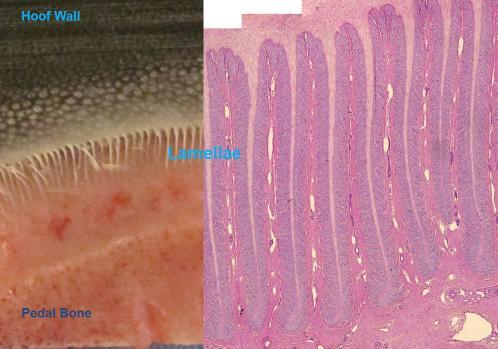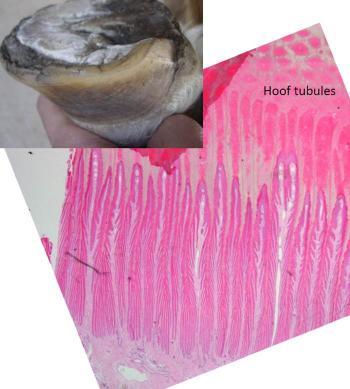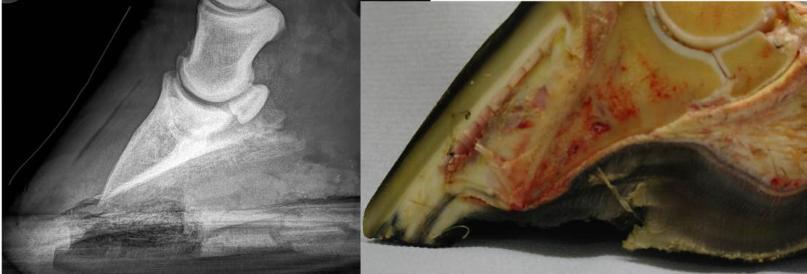What Is Laminitis?
Laminitis is a serious form of lameness in horses characterised by a hot, painful hoof, with bounding pulses that can be felt in the digital arteries down the back of the fetlock and pastern region (Figure 1).
Laminitis has a number of possible causes but the outcome is damage and weakening of the lamellae (or laminae [US spelling]). These are the attachments that provide support between the hoof wall and the pedal bone (Figure 2).
The main problem, in Laminitis cases, is damage to the lamellae causing the lamellae to weaken and elongate (Figure 3). Ultimately and in severe cases, these weakened lamellae can actually break, the pedal bone is no longer supported in the hoof capsule.
Loss of strength within the lamellae allows the pedal bone to shift within the hoof capsule and it can either rotate away from the hoof wall (so the tip of the bone points downwards or even penetrates the sole), or sink, or both. This is called founder and can be excruciatingly painful, and in some cases would require euthanasia of the horse for humane reasons (Figure 4).

Figure 1 - Feeling for digital pulses around the fetlock

Figure 2 - The image above shows the anatomy without magnification where the hoof wall and its tubules overly the lamellae which overlay the pedal bone. The microscopic image on the right shows the layered appearance of the lamellae

Figure 3 - Microscopic image of the lamellae of a pony with laminitis. Note the elongation of the laminae. The hoof wall end shows a 'ghosting' of lamellae where they have been replaced at that end with abnormal keratin. This will grow out of the hoof and will be seen at the sole as 'cap horn' and widening or separation of the white line

Figure 4 - Radiographic and cross-sectional view of a horse with rotation of the pedal bone resulting in founder. This horse was suffering and was euthanased